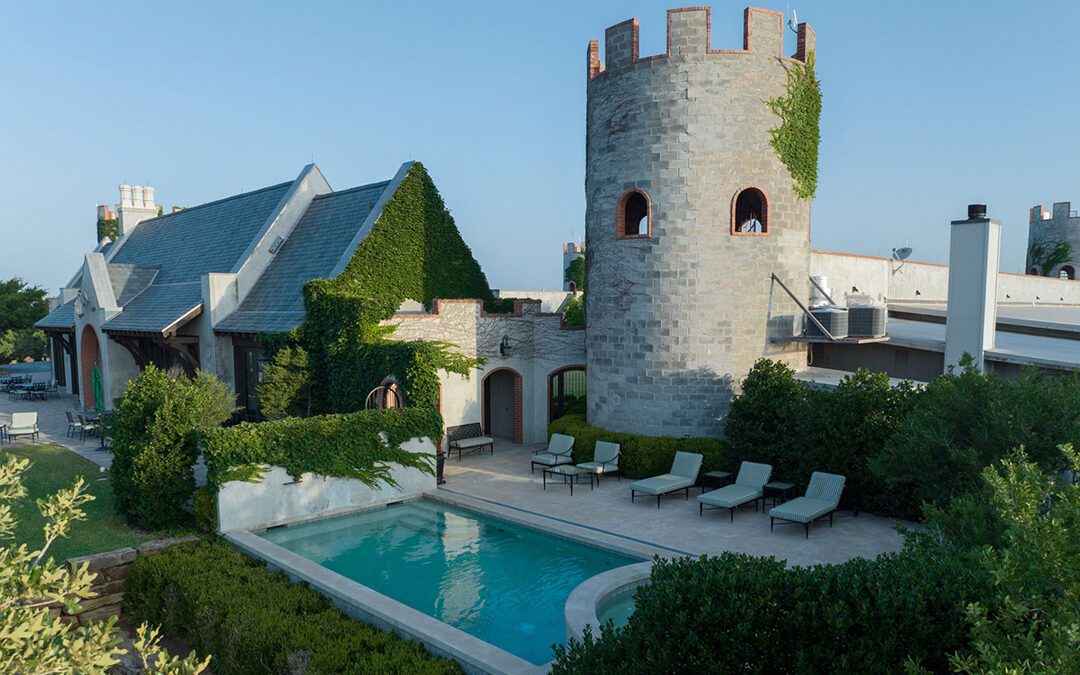The Greystone Castle Sporting Club did not, like a phoenix, arise from a bed of ashes. This superb Texas hunting and shooting facility did, however, end up being built, in good measure, on a pile of bricks.
The story begins in the late 1800s when a large vein of coal was discovered in rural Erath County, Texas, some 75 miles west of Fort Worth. The Texas and Pacific Coal Co. began mining operations in the area and built the company-owned town of Thurber, named after company owner H. K. Thurber of New York City. At its peak around 1920, Thurber was one of the largest bituminous coal-mining sites in Texas and, with some 10,000 residents, the largest town in the state between Fort Worth and El Paso.
Thurber’s good fortune was further enhanced when deposits of shale clay in the area were used to start a brick-making factory whose kilns, of course, were heated by the company’s coal. The plant specialized in producing paving bricks, which were used to surface hundreds of miles of early Texas highways and streets.
The conversion of the country from coal to oil and the development of asphalt for road surfacing dealt a death blow to Thurber. The Texas and Pacific Coal Co. began tearing down and disassembling practically every home, shop and other building in the town during the mid-1930s. By 1939, Thurber was a ghost town, devoid not only of people, but also of practically any sign that would serve as a reminder that it had once been a thriving community of coal miners, brick-makers and their families.
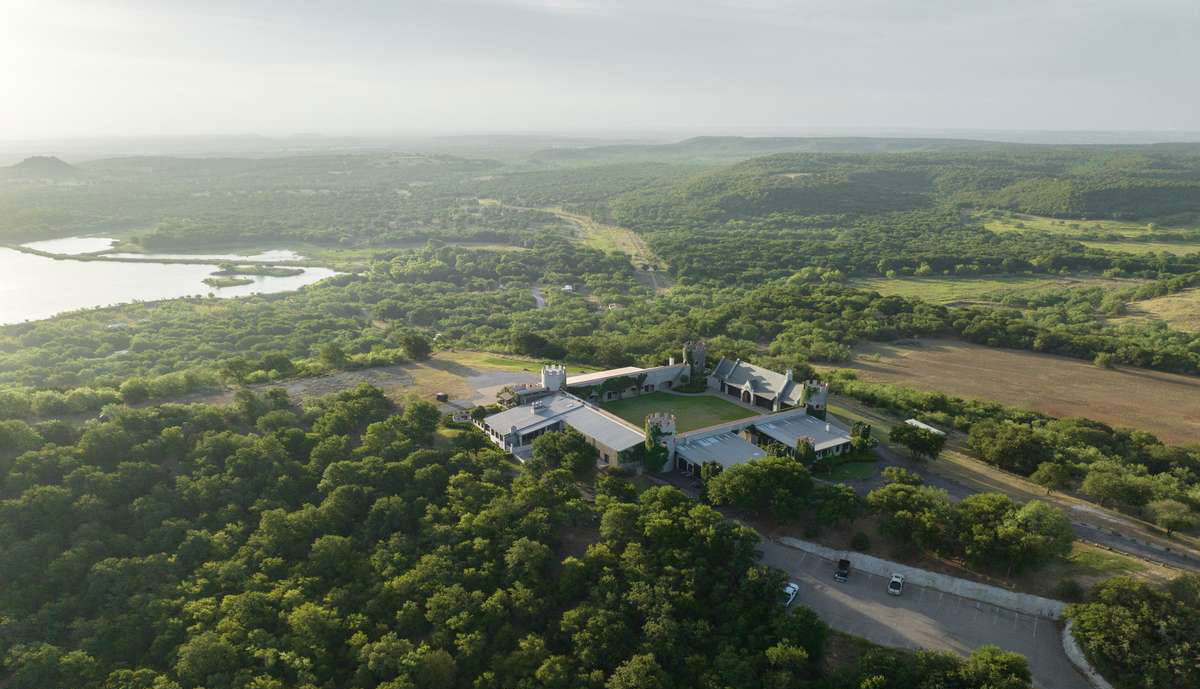
Over the decades, much of the area around Thurber reverted back to its natural state. In the 1980s, a Texas businessman set out to build a true English castle as the centerpiece of a world class sporting facility. A portion of the land he bought included Thurber’s brickyard and the plant’s kilns, by then largely in ruins.
In recent years, new investors have significantly upgraded the castle and surrounding facilities and added a number of features, from a trophy bass lake to several sporting clays courses and a wobble deck/5-stand to Greystone’s more than 6,000 acres.

At the top of the club’s main driveway, you come upon the castle itself, a true medieval rendition of the genre punctuated at the corners by high towers, each with its tooth-shaped parapets. Sitting on a high mesa that overlooks thousands of acres of the club’s property, Greystone is, even for the seasoned traveler, a breathtaking sight.
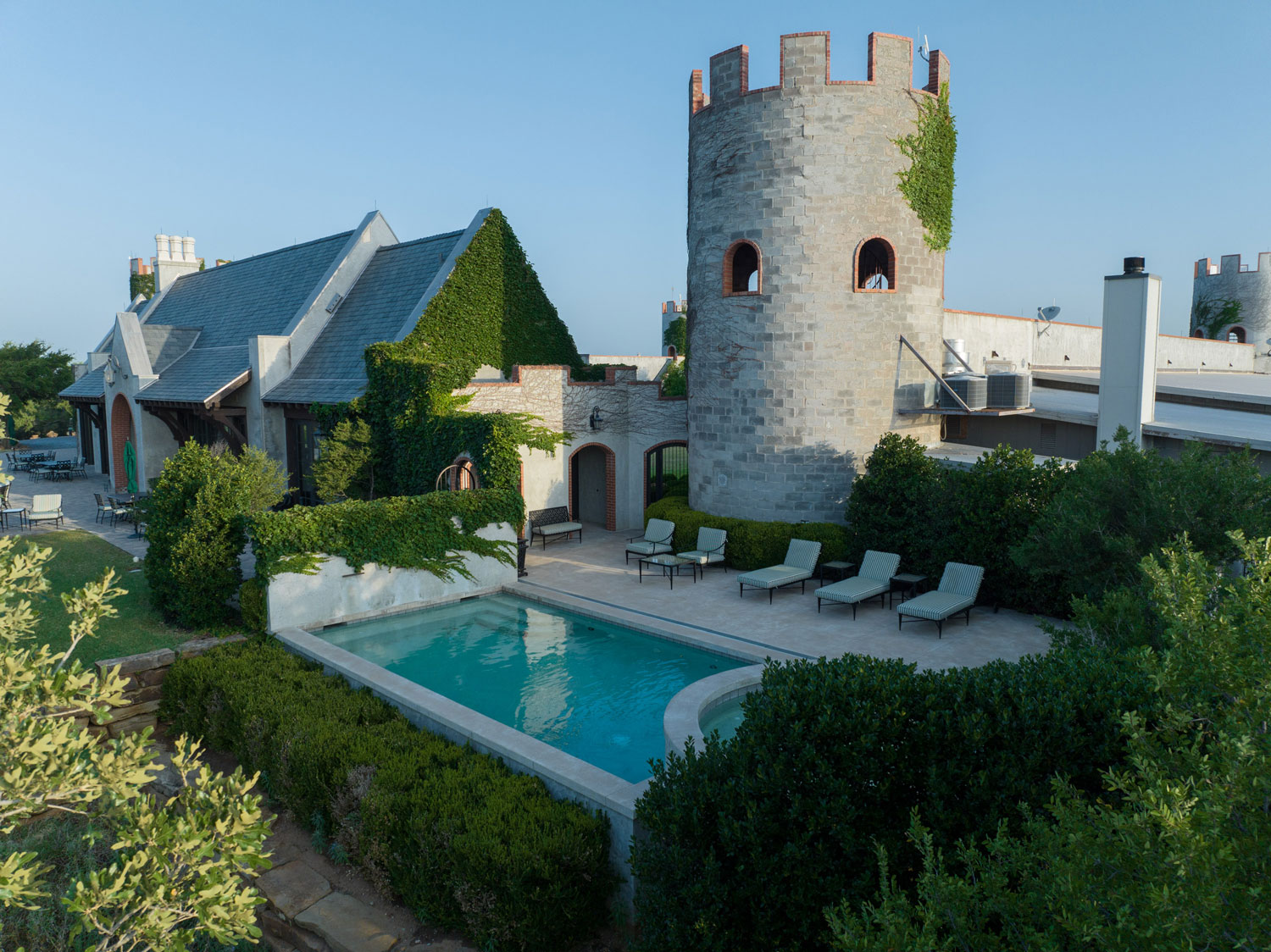
As I arrived in the courtyard—the inner bailey—I was greeted by general manager Patrick Wall, my tour guide and gunning companion for the next several days. An avid hunter, Wall was a recently retired Marine colonel who has parlayed his love of the outdoors into a gratifying occupation and lifestyle.
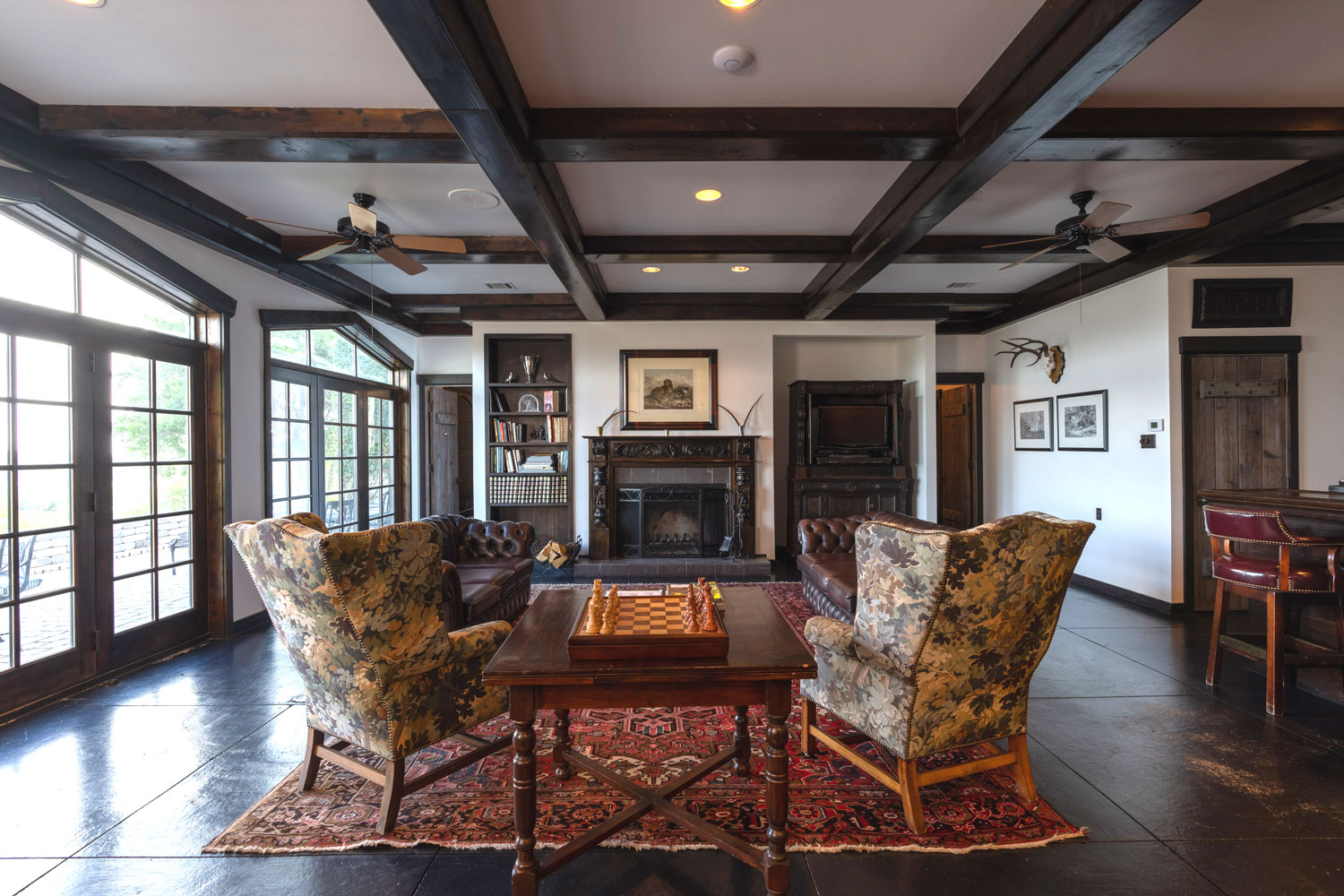
The guest accommodations at Greystone are, in a word, baronial. I was lodged in a three-bedroom upstairs/downstairs suite that included a dining and living room as well as a kitchen area, all of it more than enough to provide a small hunting group or family a chance to enjoy an early morning coffee or nightcap in a private and very comfortable setting. Kudos to the club’s interior designer who has artfully matched the furniture and accessories of these suites to the time when lords and ladies of the realm enjoyed the grand decor of their castle homes.

Many hunting lodges have a few “warm-up” clay stations where guests can take a few practice shots before heading afield. The Greystone Club has gone in another direction, installing two full-fledged sporting clays courses with a total of 23 stations as well as the aforementioned wobble trap setup and challenging five-stand.
On my first day at the lodge, Patrick and I started off on the aptly named Brickyard course, which features 13 stations, on many of which can be seen the crumbling remains of the old brick kilns. A number of the executives of the Texas and Pacific Coal Co. came from New York City and, in the years of Thurber’s heyday, built their large homes on a hill overlooking the town, which came to be known as New York Hill. That happens to be the location of Greystone’s second sporting layout, which not surprisingly, is named the New York Hill course. William Walton, the National Sporting Clays Association (NSCA) 2015 National Champion, is the head teaching professional at Greystone.
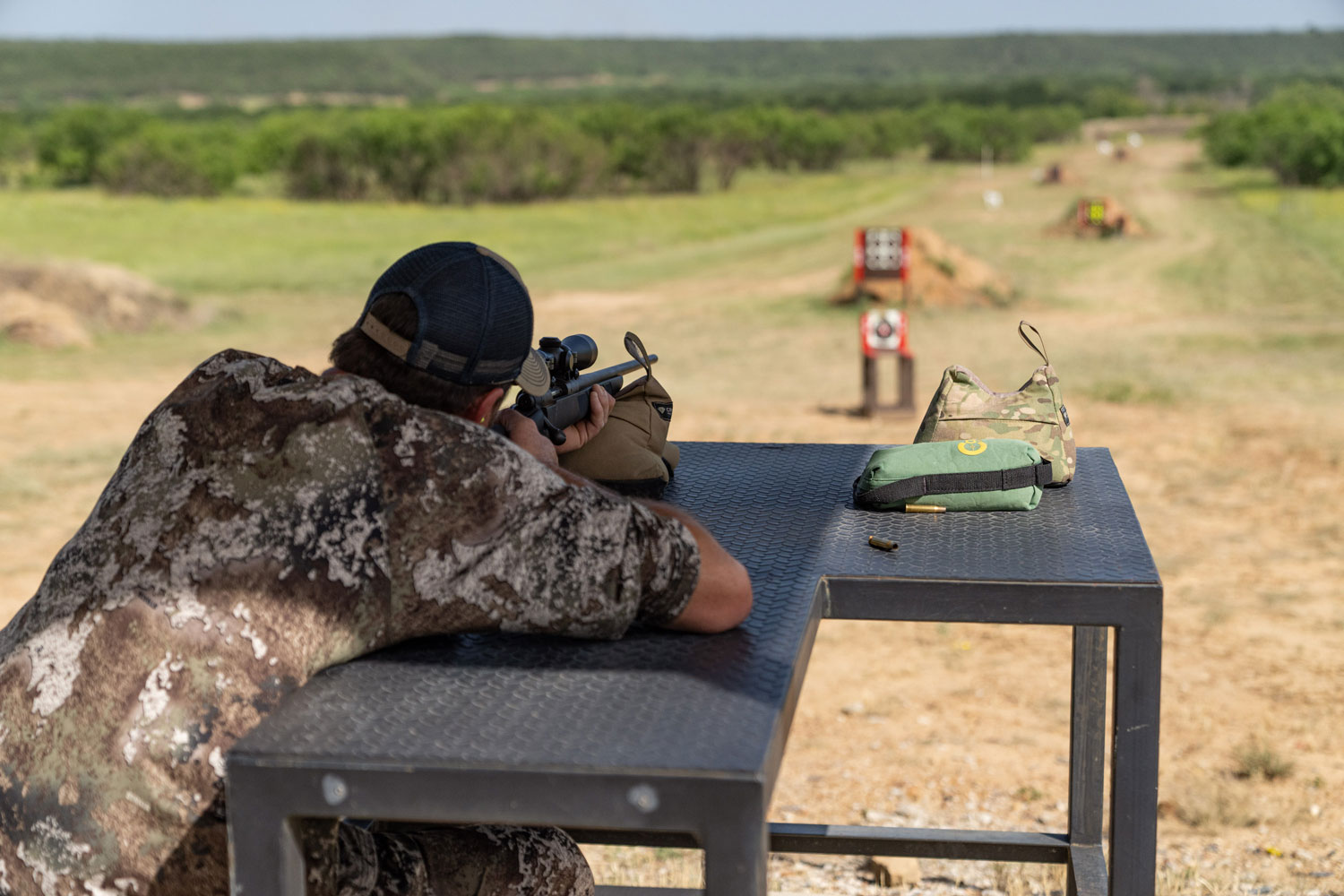
Most of us who love to shoot shotguns in the field simply don’t have the opportunity to pull the trigger on a weekly, or even monthly basis. There is no better way to get back into the groove than shooting a hundred or so clay targets thrown in a variety of flushing, incoming and crossing presentations before you head afield. For the beginner, it may be largely a matter of practicing a consistent mount and an on-plane swing. For many a veteran, it’s about working out the kinks, especially in re-establishing the muscle memory that encourages us to move aggressively through a fast-crossing target with confidence and without—oh deadly sin!—rechecking our lead.

With more than a hundred acres of lakes built on the property, Greystone is a magnet for ducks migrating through the Central Flyway. In what is otherwise a largely arid landscape, these impoundments provide topnotch duck hunting during the Texas waterfowl season. Water and a variety of grain crops also attract and keep thousands of mourning doves during the September/October season.
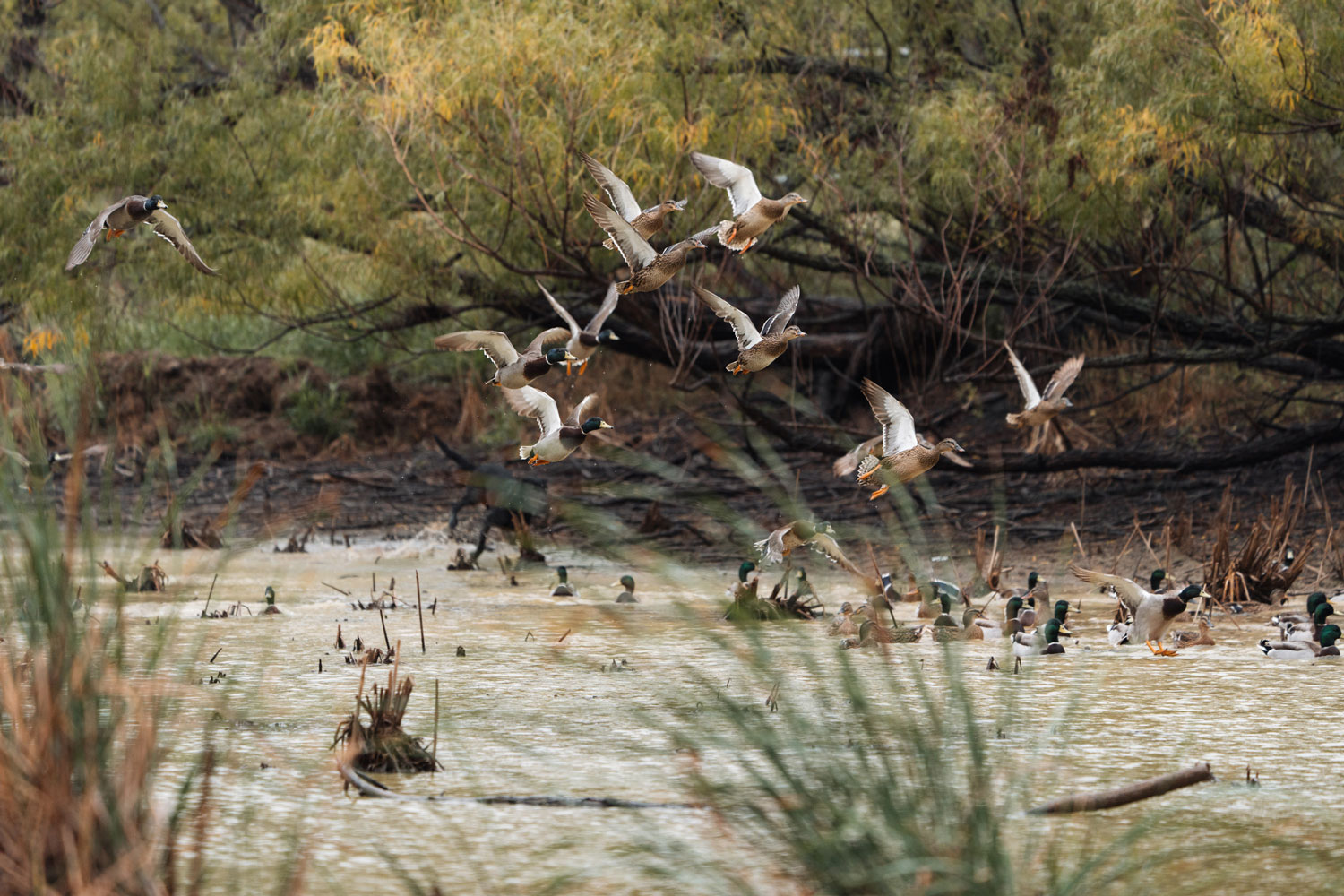
After sharpening my eye on the clays course, Patrick and I headed over to the club’s flighted mallard operation, a large pond bordered by wooded hills. There, the mallards came in high and, as likely as not, would buzz on right past the blind. It was a good test of our wingshooting skills with plenty of 30-yard-plus crossing shots. As always, watching an eager Lab retrieve our birds was more than half the reward.
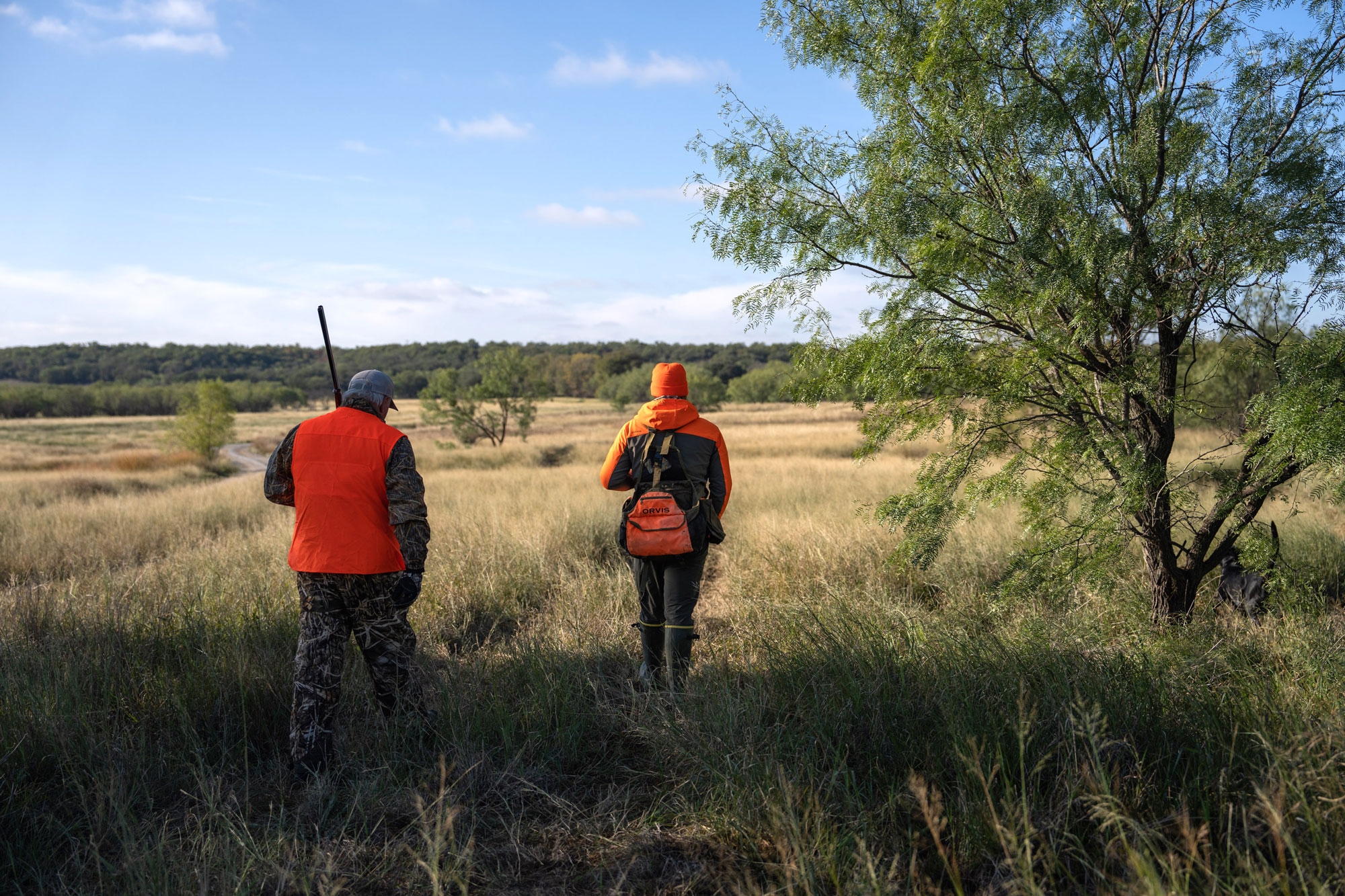
Large fields planted in sorghum, millet and switchgrass have created many hundreds of acres of excellent upland bird habitat where Greystone holds walk-up hunts for pheasants, quail, Hungarian partridge and chukars.
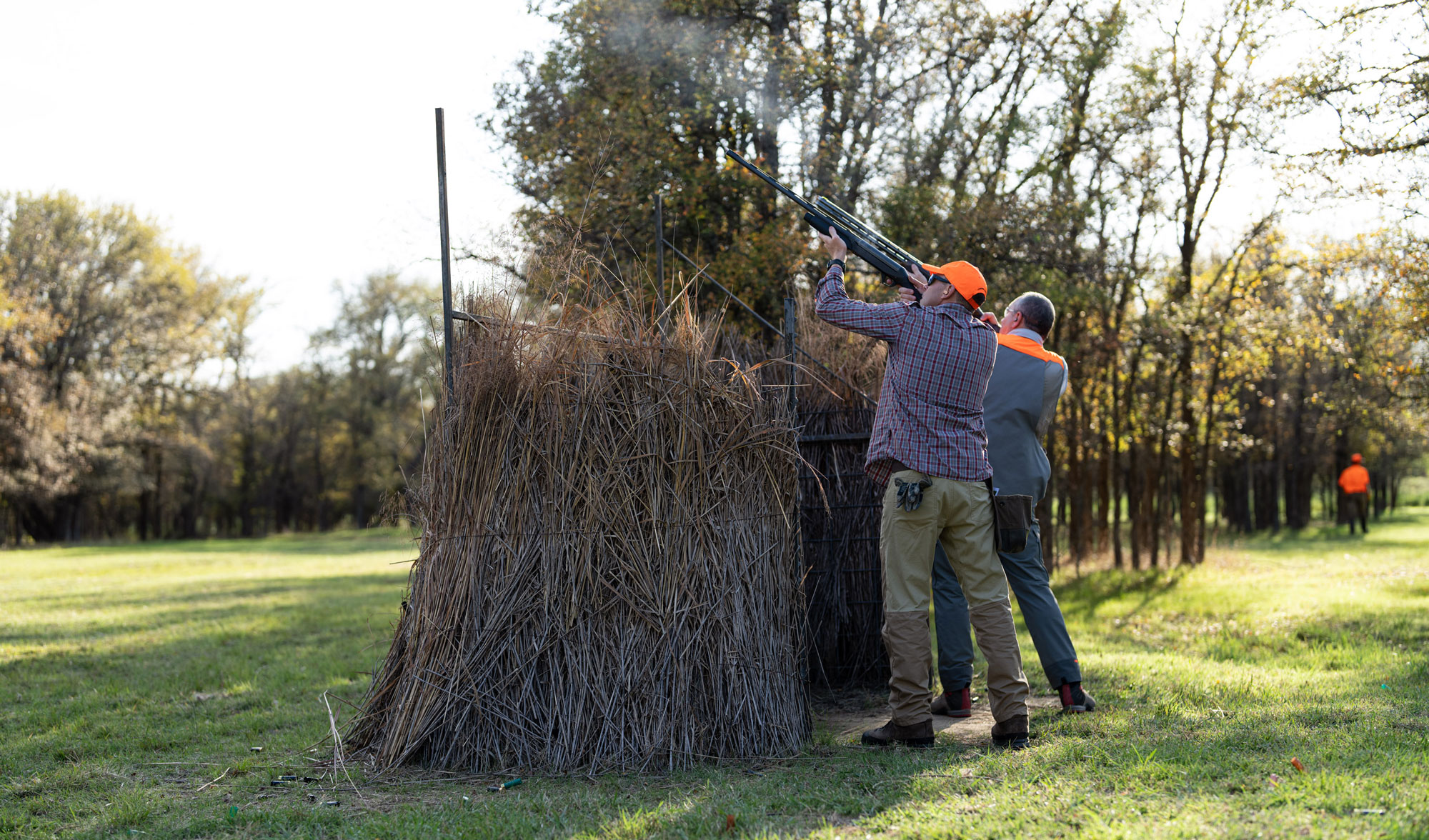
For groups of hunters, the club also offers a driven-style pheasant shoot with English-style butts set out at the edge of a wooded area in the bird-hunting area. It’s not surprising that Greystone Castle was named the Orvis Wingshooting Lodge of the year in 2011, 2015 and 2021.
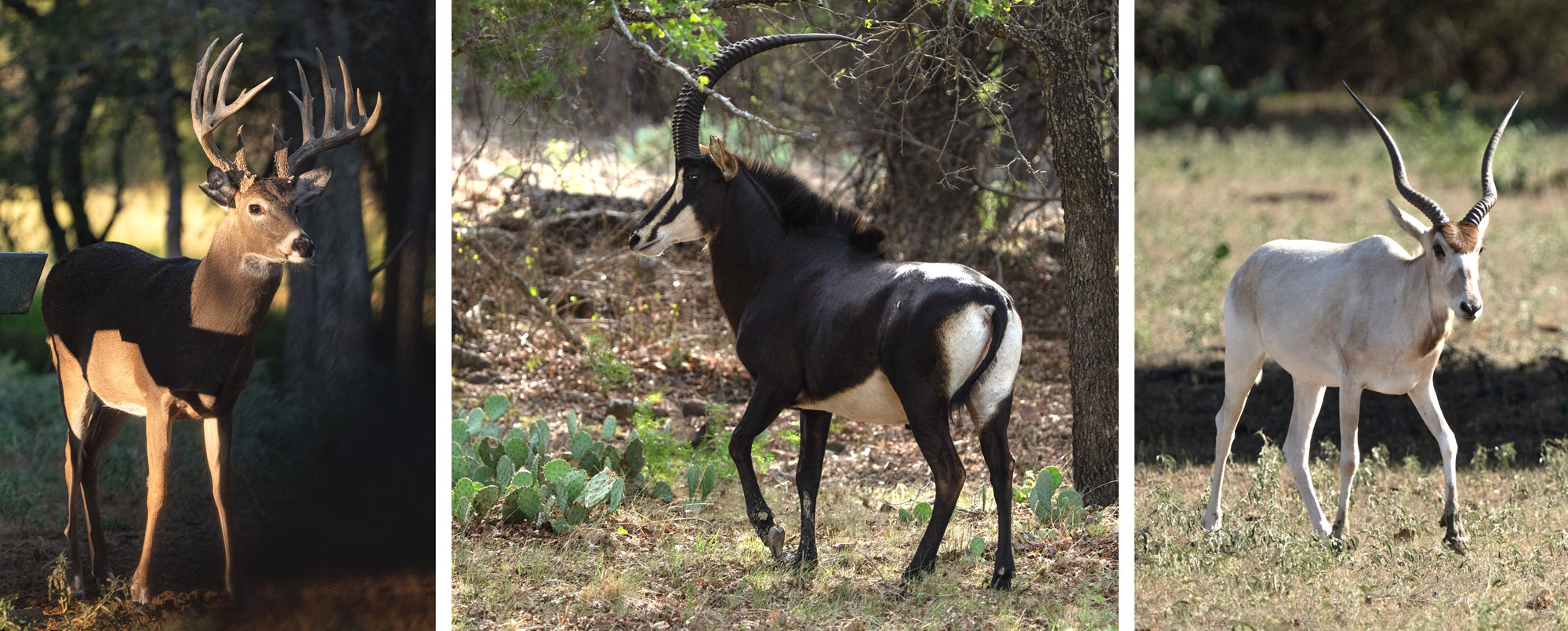
In addition to its reputation as a trophy whitetail destination, Greystone Castle offers guided hunts for more than 25 species of wild game. African animals include gemsbok, waterbuck, blesbok, springbok, scimitar-horned oryx, Grant’s gazelle, impala, Nile lechwe, addax and nilgai. Other species virtually from around the world include aoudad sheep, red stag, sika deer, fallow deer, axis deer, mouflon, red sheep, tahr, Texas Dall sheep, blackbuck, Pere David’s deer, Corsican sheep, Catalina goat and Jacob’s 4-horned sheep. North American animals include elk and bison.

On my second day, Patrick and I headed out for a mixed bag hunt with some stylish English pointers and a gaggle of English cockers to do the retrieving. Greystone has a 60-run kennel that is widely known for its well-performing and well-trained dogs.
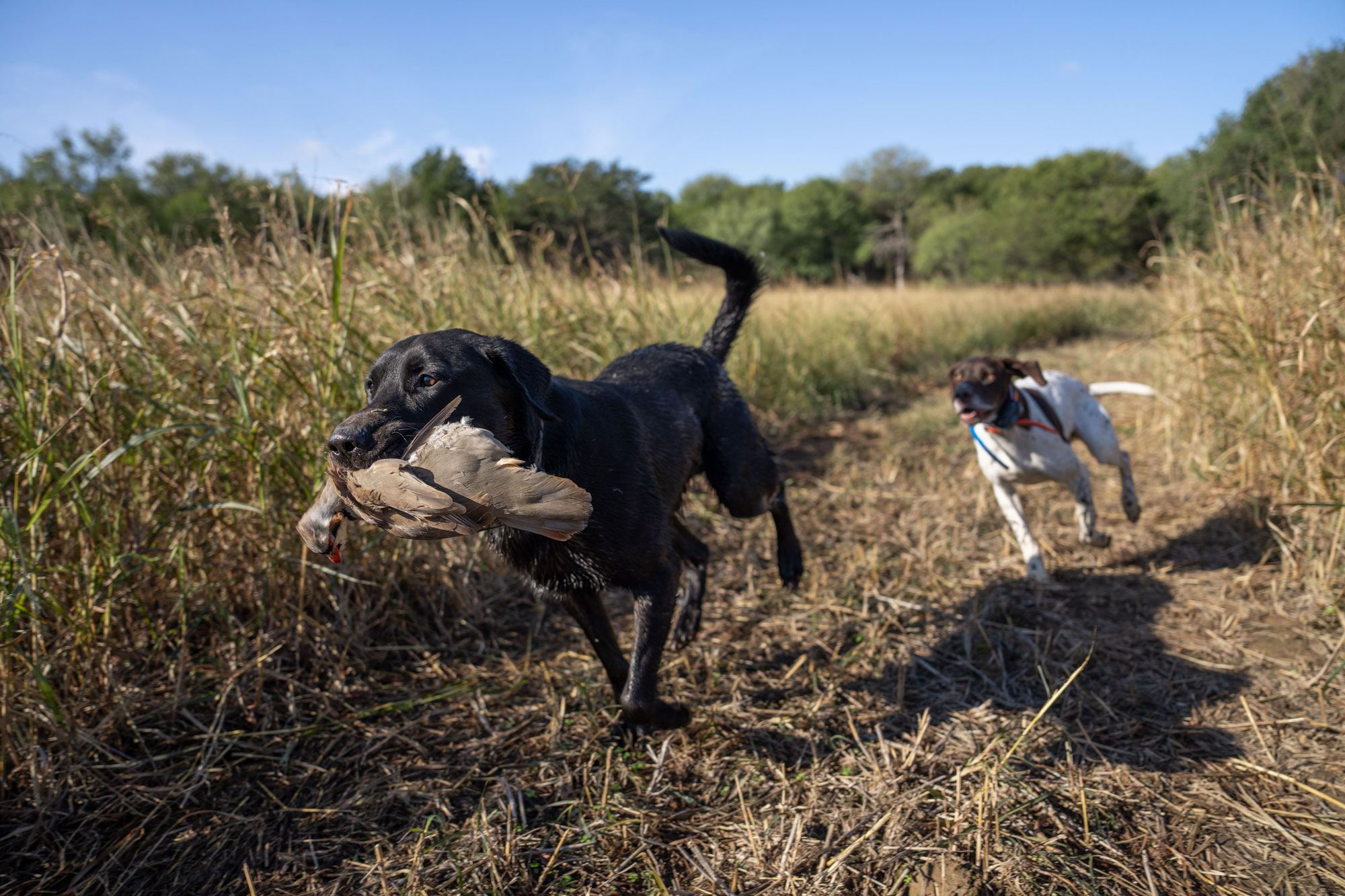
The birds flew well throughout the afternoon and the dogs were a joy to watch. Both Patrick and I had our fair share of good shots, with a few doubles on quail and chukars to boot.
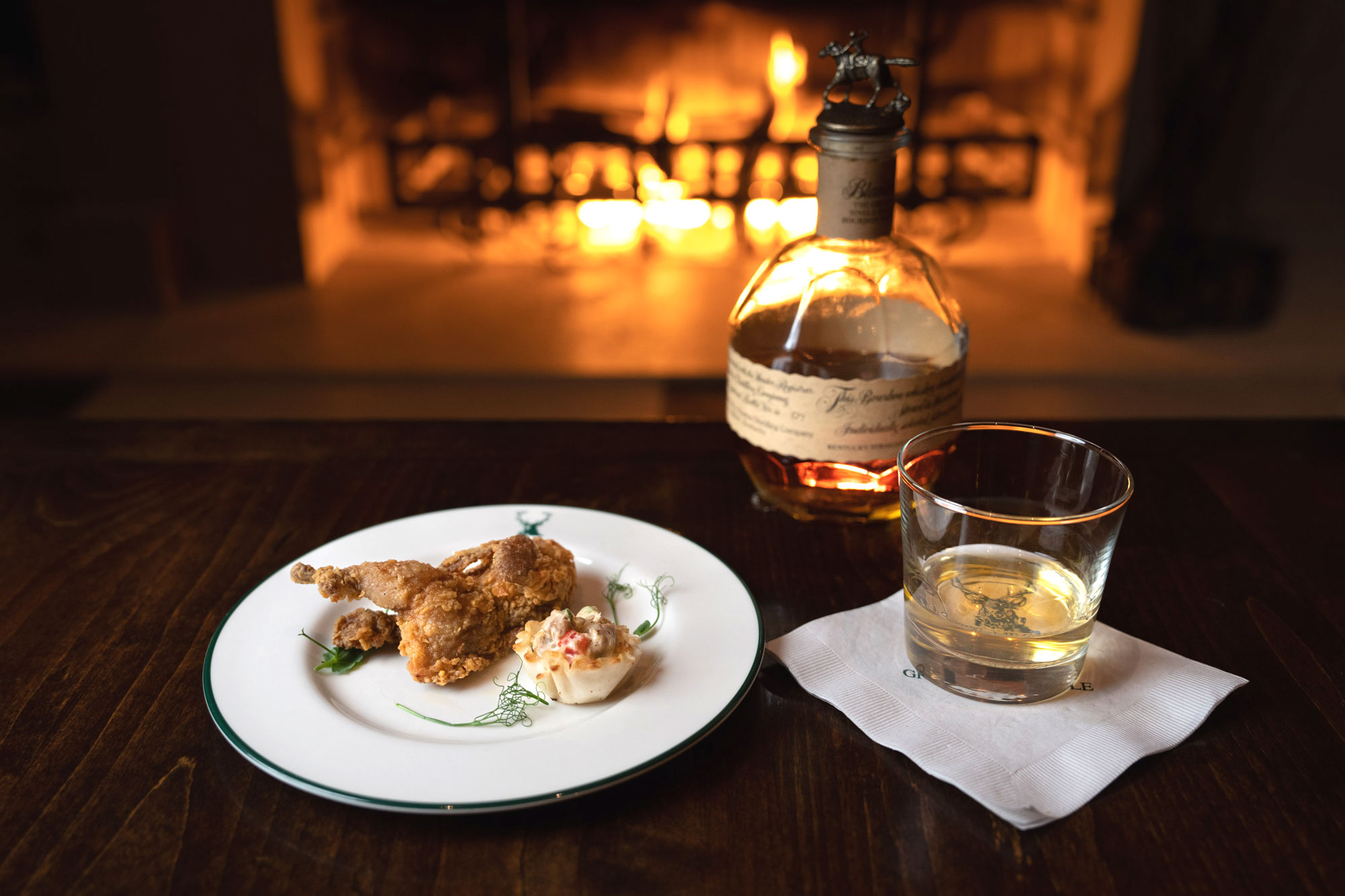
At the end of the day, a cocktail or two was in order, and Greystone’s pavilion bar offers an elegant setting with top-shelf liquors along with a spectacular vista overlooking the property. Celebrate the day with a Shiner Bock—a favorite Texas beer—and end the evening with a single-malt before you head off to your suite for the night.

Dining does not disappoint at Greystone either. From the chef’s fried quail appetizer and a center-cut prime rib along with an excellent glass or two of Bordeaux, to a heavenly raspberry cheesecake, dinner at the club is truly a dining experience. Lunch is also at the castle and includes favorites such as pork loin and grits, pheasant salad wraps and the club’s famous buffalo burger. And don’t skip the freshly baked biscuits and gravy in the morning.
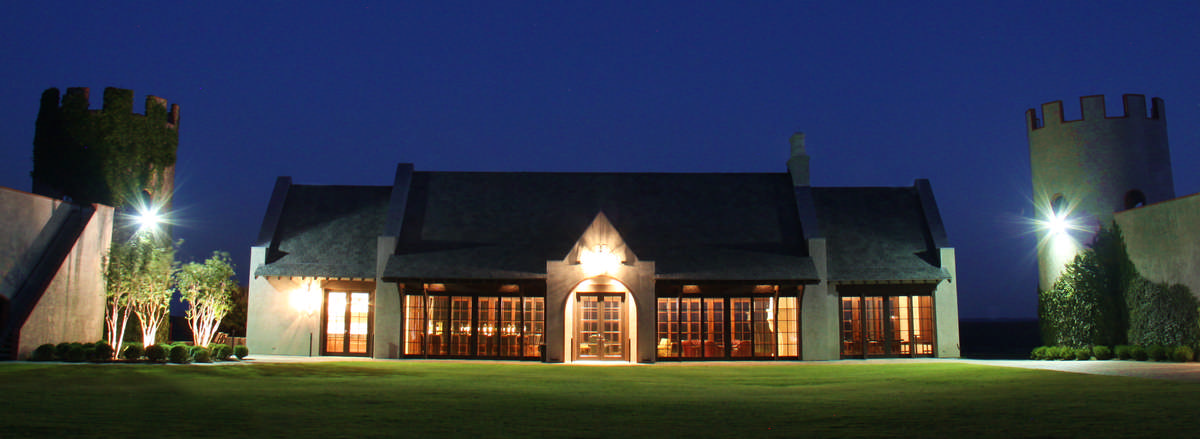
While a few Thurber bricks can yet be found scattered among the ruins of the old kilns, Greystone Castle still has, if you will, its own “Yellow Brick Road.” It’s a road that does not lead to a fantasy land of witches and flying monkeys, but it is one that brings you to an amazing land of hunting and fishing opportunities. Just keep the driveway sign in mind as you climb the hill to the club: Castle Guests Only Beyond This Point.
If You Want to Go:
To book your own hunting or fishing adventure, call (800) 399-3006 or visit greystonecastle.com

